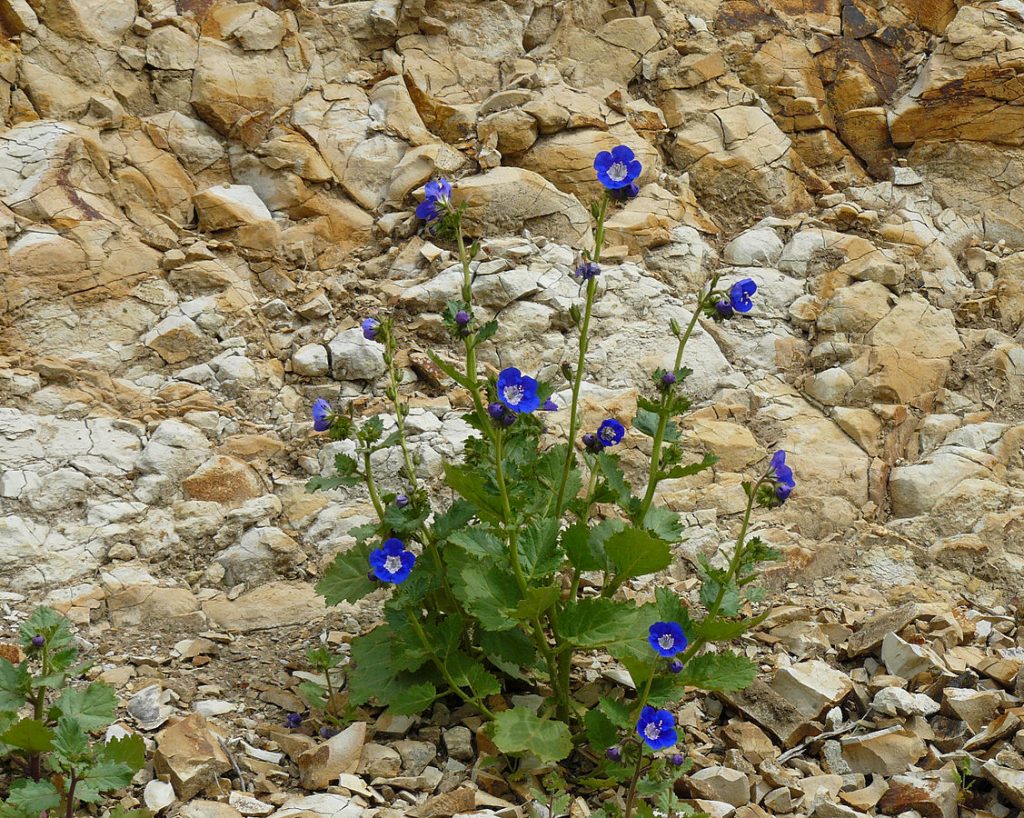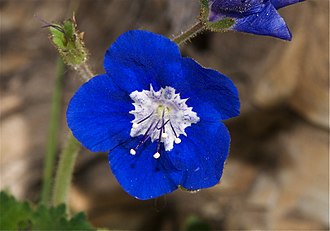
Also known as tacky phacelia and scorpion weed, this annual is native to the coastal hills and mountains of central and southern California and northern Baja California where it grows in such habitats as chaparral, and coastal sage scrub. It is a member of the borage family, Boraginaceae, that also includes forget-me-nots, Siberian bugloss, and comfrey. The plant grows up to 2.3′ tall, and is branched, hairy, sticky and coated in soft and stiff, glandular hairs. The oval leaves are .4 to 4″ long, carried on petioles, and have toothed margins. The bell shaped, 5-lobed flowers are about 1″ across and appear on curved cymes in spring to summer. The petals are white to gentian blue and have a paler mottled center and 5 protruding stamens tipped with white anthers. The flowers are attractive to bees and butterflies. The plants are a good choice for borders, rock gardens and containers. The genus name, Phacelia, comes from the ancient Greek word φάκελος (phákelos), meaning bundle, and refers to the clustered flowers. The specific epithet, viscida, is the Latin word meaning sticky and refers to the glandular nature of the plant parts. Photo Credit docentjoyce Wikimedia Commons
Type: Annual

Bloom: Curved cymes of white to gentian blue flowers in spring and summer
Size: 2.3′ H x 2.3′ W
Light: Full sun; tolerates some shade
Soil: Fertile, dry to medium moist, well-drained
Hardiness: Zones 9-10
Care: Fertilize 2x/ season; water spraringly
Pests and Diseases: Aphids, red spider mites
Propagation: Seed, cuttings
Companion Plants: Sand Aster (Corethrogyne filaginifolia), monkeyflower (Mimulus spp), Blue-eyed Grass (Sisyrinchium bellum)
Outstanding Selections:
var. albiflora (white flowers)
‘Blue Rhythum’
Photo Credit: Wikipedia